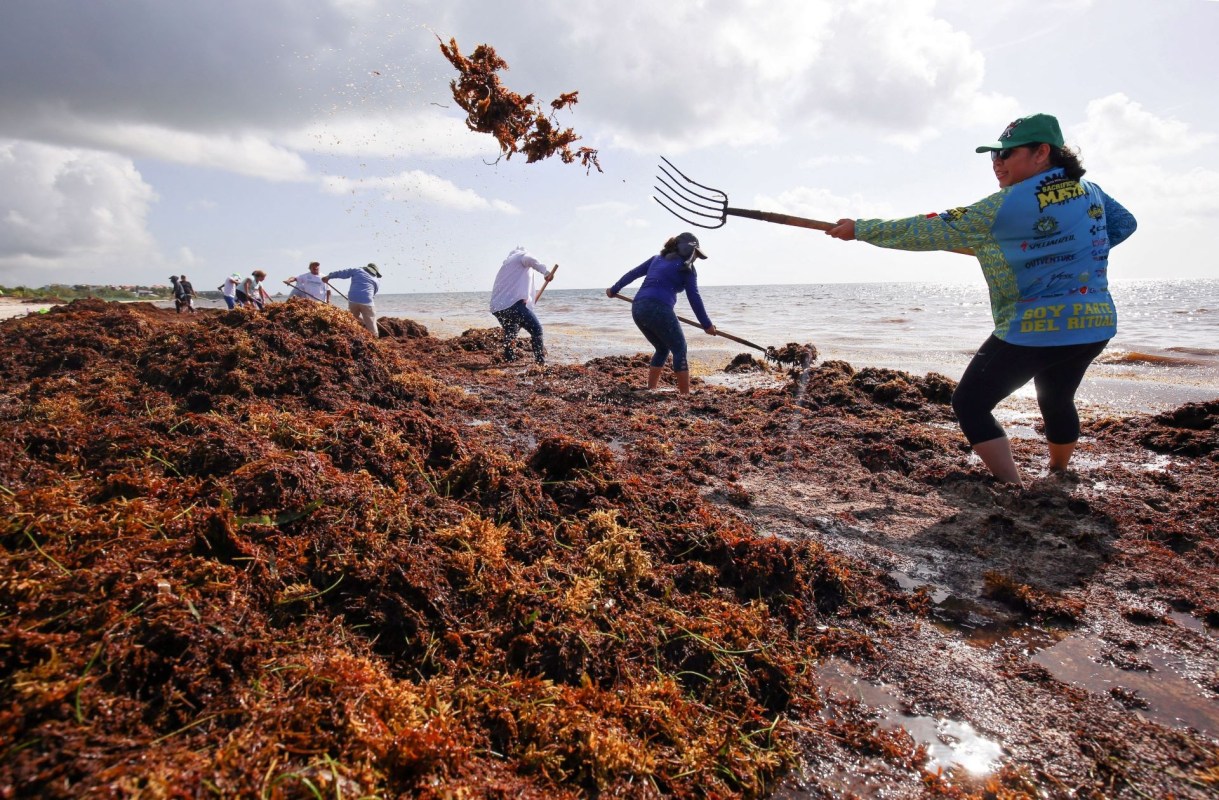A massive blob of brownish-orange seaweed, specifically Sargassum, is floating toward the shores of Florida – and much like other gargantuan Earth features, like the Grand Canyon, its sheer mass allows it to be seen from space.
Aptly named the "Great Atlantic Sargassum Belt," the tangled mass, reportedly one of the largest seaweed blooms on record, measures over 5,000 miles wide and weighs 20 billion pounds.
This behemoth blob normally swirls harmlessly around parts of the Atlantic Ocean and the Gulf of Mexico, providing feeding and breeding grounds to ocean critters, as well as absorbing large amounts of carbon pollution.
But scientists say ocean currents are now bringing the blob to our shores, where it shifts from innocuous to problematic.
The impact of the blob
As the Great Atlantic Sargassum Belt approaches coastlines, it begins to choke out basically everything. The seaweed can suffocate coral reefs and even change the pH of the coastal waters, endangering wildlife.
Once the bloom reaches our shorelines, it can devastate marinas, fishing sites, turtle nests, and tourist locales.
But the problem isn't just that there's a nearly unlimited amount of seaweed covering the beaches – once Sargassum has been on the shore for a couple of days, it starts to rot, releasing toxic hydrogen sulfide fumes and odors said to resemble manure.
The gas from the rotting seaweed can even cause serious respiratory and neurological issues for people who inhale it, putting residents and tourists in danger.
You've clearly not never been on a sargassum blighted beach. pic.twitter.com/JEf8uZXXEb
— S Coast Steve (@SCoastSteve) March 9, 2023
How is the Sargassum Belt changing?
Of course, the presence of the Great Atlantic Sargassum Belt isn't new. Scientists have been tracking its movement from satellites for over a decade. But this year, the blob is likely the largest it's ever been.
According to Florida Atlantic University ecologist Dr. Brian Lapointe, 2023 could be a bad year for both Florida and Caribbean beaches, residents, and businesses.
Dr. Lapointe told the New York Times that "these blooms are getting bigger and bigger, and this year looks like it's going to be the biggest year on record."
He continued, "[the blob] is really a catastrophic problem for tourism in the Caribbean region where it piles up on beaches up to 5 or 6 feet deep."
The professor of coral reef ecology explained the immense toll the blob is taking on tourist communities — like the beaches of Barbados — which required "1,600 dump trucks a day to clean the beaches of this seaweed."
But besides being larger than usual, the Sargassum mass is also making landfall two months earlier than normal.
What's making it worse?
The overheating of our planet is likely in part to blame. As ocean waters heat up, it's changing how currents move, and water upwells, leading to the growth of a bigger and bigger blob.
Additionally, the agricultural and dirty energy industries continue polluting our oceans with elements like phosphorus and nitrogen in their runoff, which serves as food for the Sargassum to grow and thrive.
What's next?
While many beaches will be spared of the blob's wrath, affected counties will still spend millions of dollars to deal with the beached seaweed masses.
Researchers and scientists are quickly trying to find solutions to limit Sargassum's impact on tourism and coastal ecosystems. Some ideas include trying to sink it or use it in commercial products, such as fuel.
But whatever solutions coastal communities end up implementing, this story of monstrous sea weed underscores how we must not ignore the impacts of polluting industries.
Join our free newsletter for cool news and cool tips that make it easy to help yourself while helping the planet.









